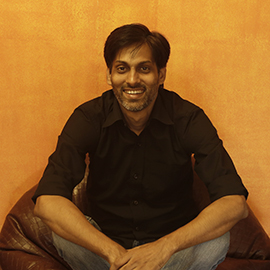One year of Kashi-Kyoto protocol: nothing has moved in Modi's Varanasi

The plan
- On 30 August, 2014, PM Narendra Modi had signed the Kashi-Kyoto protocol
- The main aim was to take Kyoto\'s help to revive Varanasi
- One year later, very little has happened on the ground
- A few civic officials from Varanasi visited Kyoto, but the report hasn\'t been prepared
The hitches
- Civic officials, who are responsible for the plan\'s implementation, don\'t know what to do
- The steering committee for the plan has no financial powers
- There is confusion on the division of responsibilities between various agencies
- Also, there aren\'t too many similarities between Varanasi and Kyoto
- People of Varanasi are resistant to change
The water is full of sewage, the air is heavy with diesel fumes and the city's narrow alleys teem with hordes of people. Welcome to Varanasi, where life itself seems to be choking.
The city known as the gateway to salvation, is dying a slow death. A major campaign to resuscitate Varanasi was initiated on 30 August last year.
Prime Minister Narendra Modi, who is also the Member of Parliament from Varanasi, signed the Kashi-Kyoto protocol on that day. His followers claimed that the Sanjivani, an eternal medicine to revive this ancient city, had been found.
One year has passed since then and the Kashi-Kyoto protocol doesn't seem to be working.
See also: One year on. What Varanasi thinks of Modi: a video diary
No progress except a visit to Kyoto
On 3 December 2014, the Union Urban Development ministry constituted a 11-member steering committee. It was was headed by the ministry's secretary and included the mayor and municipal commissioner of the city along with the vice-president of the Varanasi Development Authority.
This steering committee was assigned three main tasks:
- To acquire Japanese technology in water, waste, sewer and transport management.
- To devise ways and means to preserve the cultural heritage of Varanasi.
- To ensure academic collaboration between Kyoto University and Banaras Hindu University.
Very little has been done to accomplish these tasks. As Varanasi Mayor Ram Gopal Mohle puts it, "The committee had a meeting in Delhi about 3-4 months ago. Some of the members visited Kyoto. But hasn't been much progress after that. A project report was prepared which we have rejected. Everything is in preliminary stage as of now."
The Deputy-Mayor of Kyoto Kenichi Ogasawara visited Varanasi in October last year. He assured that Kyoto would help the city in every possible manner.
However, the members of the steering committee aren't as confident. Hari Pratap Shahi, the present Municipal Commissioner of Varanasi, says he has no knowledge of the issue.
"I have no information about this. It was my predecessor Umakant Tripathi who had visited Kyoto," he says.
He further adds, "The team that went to Kyoto has not prepared any report. The committee has its own constraints. It has no financial rights. It is a technical agreement that cannot do much, especially as it is between the Municipal Corporations of two different countries. There is no substantial progress in its implementation."
Confusion on the ground
The Kashi-Kyoto protocol envisaged a closer relationship between the universities of the two cities. Has there been any progress on this front?
"All I know is that a team from Kyoto University came for a visit, some days ago," says Shahi.
People aren't open to change. Every Banarasi pollutes the Ganga and says that the river will protect herself
What is the future of this treaty? Members of the steering committee suggest that the main emphasis is on acquiring Japanese technology.
As Mohle puts it, "We are trying to use Kyoto's modernity to save Varanasi's antiquity."
Mark Twain once said, "Benaras is older than history, older than tradition, older even than legend and looks twice as old as all of them put together."
But this city is standing at a crucial crossroad between modernity and its ancient heritage.
Where does the problem lie?
This confusion is all the more palpable among the steering committee members. One of the members of the committee, Deputy Chairman of Varanasi Development Board Sarvagya Ram Mishra, says, "Most of the things come under the purview of the Municipal Corporation. Therefore, I cannot tell you more."
Kyoto and Varanasi have few cultural or historical parallels. Temples that have been preserved in Kyoto were in a relatively better condition. The temples of Varanasi are so ancient and dilapidated that any tinkering with them could have an adverse impact.
The bigger problem lies in the psyche of the people. The citizens of Varanasi are still not open to change, unlike Kyoto. This is evident from the fact that almost every Banarasi pollutes the Ganga and then says that the holy river will protect herself.
The temples and ghats of Varanasi are in shambles. But any sort of modification in their structure could infuriate its residents, who are intricately attached to the city's heritage.
Kashinath Singh, the author of the acclaimed Hindi novel Kashi ka Assi, offers a valuable insight, "Any attempt to transform Banaras must emanate from the city's culture. The city will never accept any attempt to tamper with its culture".
Elaborating on what the culture of Varanasi actually is, he says, "The culture of Banaras is not just religious rituals. It is the city of the music maestros, it is the city of Kabir, it is the city of the holy river Ganga. Everybody shares a little bit of this city and it is only by preserving these little bits that we can save the entire city."
First published: 30 August 2015, 10:30 IST





![BJP's Kapil Mishra recreates Shankar Mahadevan’s ‘Breathless’ song to highlight Delhi pollution [WATCH] BJP's Kapil Mishra recreates Shankar Mahadevan’s ‘Breathless’ song to highlight Delhi pollution [WATCH]](https://images.catchnews.com/upload/2022/11/03/kapil-mishra_240884_300x172.png)

![Anupam Kher shares pictures of his toned body on 67th birthday [MUST SEE] Anupam Kher shares pictures of his toned body on 67th birthday [MUST SEE]](https://images.catchnews.com/upload/2022/03/07/Anupam_kher_231145_300x172.jpg)






